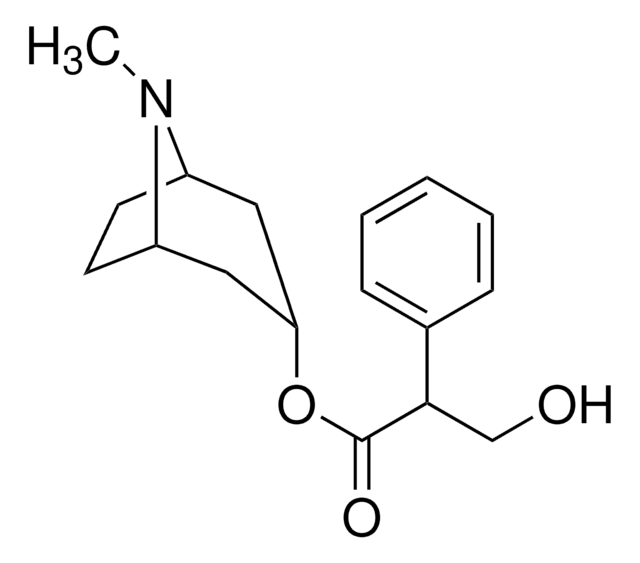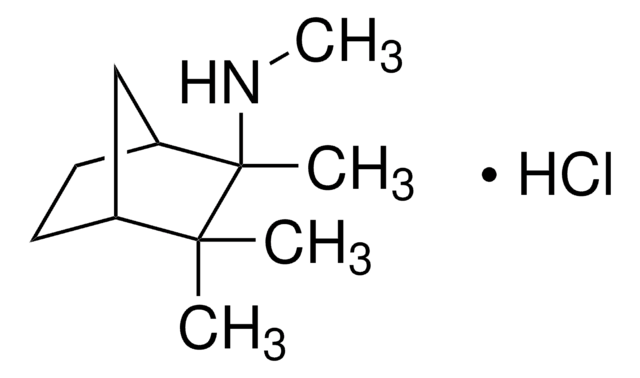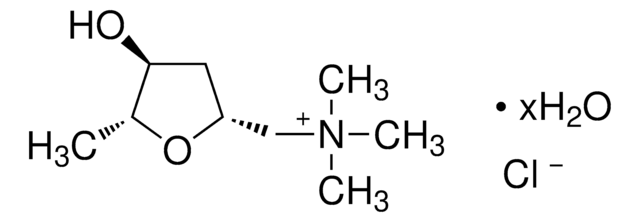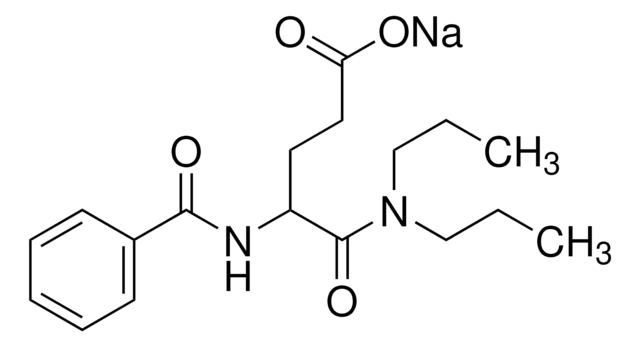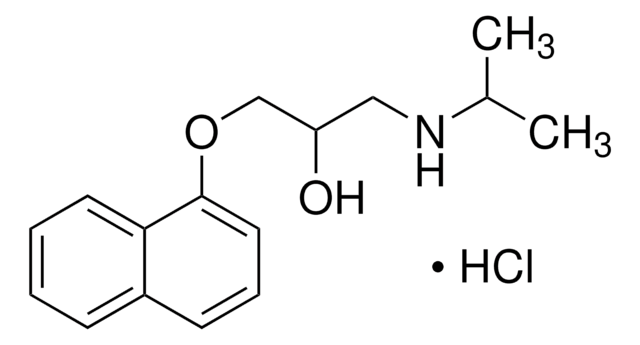A0132
Atropine
≥99% (TLC), powder
Synonyme(s) :
Hyoscyamine, Tropine tropate, endo-(±)-α-(Hydroxymethyl)benzeneacetic acid 8-methyl-8-azabicyclo[3.2.1]oct-3-yl ester
About This Item
Produits recommandés
Essai
≥99% (TLC)
Forme
powder
Couleur
white
Solubilité
H2O: 2 mg/mL
dilute aqueous acid: soluble
ethanol: soluble
Chaîne SMILES
CN1[C@H]2CC[C@@H]1C[C@@H](C2)OC(=O)C(CO)c3ccccc3
InChI
1S/C17H23NO3/c1-18-13-7-8-14(18)10-15(9-13)21-17(20)16(11-19)12-5-3-2-4-6-12/h2-6,13-16,19H,7-11H2,1H3/t13-,14+,15+,16?
Clé InChI
RKUNBYITZUJHSG-SPUOUPEWSA-N
Informations sur le gène
human ... CHRM1(1128) , CHRM2(1129) , CHRM3(1131) , CHRM4(1132) , CHRM5(1133) , LOC730413(730413)
mouse ... Chrm1(12669)
rat ... Chrm1(25229) , Chrm2(81645) , Chrm3(24260) , Drd2(24318) , Htr1a(24473)
Vous recherchez des produits similaires ? Visite Guide de comparaison des produits
Description générale
Application
- as a tastant to analyse the bitter taste perception in Drosophila larvae
- as a muscarinic acetylcholine autoreceptors (mAChRs) antagonist to investigate the involvement of individual mAChR subtypes in the control of synapse elimination
- to investigate the pathways of serotonin (5-HT) action in zebrafish hearts
Actions biochimiques/physiologiques
Caractéristiques et avantages
Reconstitution
Mention d'avertissement
Danger
Mentions de danger
Conseils de prudence
Classification des risques
Acute Tox. 2 Inhalation - Acute Tox. 2 Oral
Code de la classe de stockage
6.1A - Combustible acute toxic Cat. 1 and 2 / very toxic hazardous materials
Classe de danger pour l'eau (WGK)
WGK 3
Point d'éclair (°F)
Not applicable
Point d'éclair (°C)
Not applicable
Équipement de protection individuelle
Eyeshields, Faceshields, Gloves, type P3 (EN 143) respirator cartridges
Faites votre choix parmi les versions les plus récentes :
Déjà en possession de ce produit ?
Retrouvez la documentation relative aux produits que vous avez récemment achetés dans la Bibliothèque de documents.
Les clients ont également consulté
Notre équipe de scientifiques dispose d'une expérience dans tous les secteurs de la recherche, notamment en sciences de la vie, science des matériaux, synthèse chimique, chromatographie, analyse et dans de nombreux autres domaines..
Contacter notre Service technique
